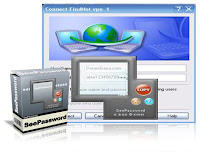



A touchscreen is a display that can detect the presence and location of a touch within the display area. The term generally refers to touch or contact to the display of the device by a finger or hand. Touchscreens can also sense other passive objects, such as a stylus. However, if the object sensed is active, as with a light pen, the term touchscreen is generally not applicable. The ability to interact directly with a display typically indicates the presence of a touchscreen.
The touchscreen has two main attributes. First, it enables one to interact with what is displayed directly on the screen, where it is displayed, rather than indirectly with a mouse or touchpad. Secondly, it lets one do so without requiring any intermediate device, again, such as a stylus that needs to be held in the hand. Such displays can be attached to computers or, as terminals, to networks. They also play a prominent role in the design of digital appliances such as the personal digital assistant (PDA), satellite navigation devices, mobile phones, and video games.
TOUCHSCREENS ARE BROADLY CLASSIFIED AS
Resistive touchscreen  Resistive touchscreens are composed of two flexible sheets coated with a resistive material and separated by an air gap or microdots. When contact is made to the surface of the touchscreen, the two sheets are pressed together, registering the precise location of the touch. Because the touchscreen senses input from contact with nearly any object (finger, stylus/pen, palm) resistive touchscreens are a type of "passive" technology.
Resistive touchscreens are composed of two flexible sheets coated with a resistive material and separated by an air gap or microdots. When contact is made to the surface of the touchscreen, the two sheets are pressed together, registering the precise location of the touch. Because the touchscreen senses input from contact with nearly any object (finger, stylus/pen, palm) resistive touchscreens are a type of "passive" technology.
For example, during operation of a four-wire touchscreen, a uniform, unidirectional voltage gradient is applied to the first sheet. When the two sheets are pressed together, the second sheet measures the voltage as distance along the first sheet, providing the X coordinate. When this contact coordinate has been acquired, the uniform voltage gradient is applied to the second sheet to ascertain the Y coordinate. This operation occurs instantaneously, registering the exact touch location as contact is made.
Resistive touchscreens typically have high resolution (4096 x 4096 DPI or higher), providing accurate touch control. Because the touchscreen responds to pressure on its surface, contact can be made with a finger or any other pointing device.
Capacitive sensing

Capacitive sensing is a technology for detecting proximity, position, etc., based on capacitive coupling effects. Capacitive sensing as a human–device interface (HDI) technology, for example to replace the computer mouse, is becoming increasingly popular.[1] Capacitive sensors can be recognized in many popular consumer products such as laptop trackpads, MP3 players, computer monitors and cell phones, but it is certainly not limited to these applications. More and more engineers choose capacitive sensors for their flexibility, unique human-device interface and cost reduction over mechanical switches. Capacitive touch sensors have become a predominant feature in a large number of mobile devices and mp3 players.

While capacitive sensing applications can replace mechanical buttons with capacitive alternatives, other technologies such as multi-touch and gesture-based touchscreens are also premised on capacitive sensing.[2] The Apple iPod click wheel is a well known implementation of capacitive sensing.
Design
Capacitive sensors can be constructed from many different media, such as copper, Indium tin oxide (ITO) and printed ink. Copper capacitive sensors can be implemented on standard FR4 PCBs as well as on flexible material. ITO allows the capacitive sensor to be up to 90% transparent (for single layer solutions). The size and spacing of the capacitive sensor are both very important to the sensor's performance.In addition to the size of the sensor, and its spacing relative to the ground plane, the type of ground plane used is very important. Since the parasitic capacitance of the sensor is related to the E-Field's path to ground, it is important to choose a ground plane that limits the concentration of E-Field lines without a conductive object present.
Designing a capacitance sensing system requires first picking the type of sensing material (FR4, Flex, ITO, etc). One also needs to understand the environment the device will operate in, such as the full operating temperature range, what radio frequencies are present and how the user will interact with the interface.



















































